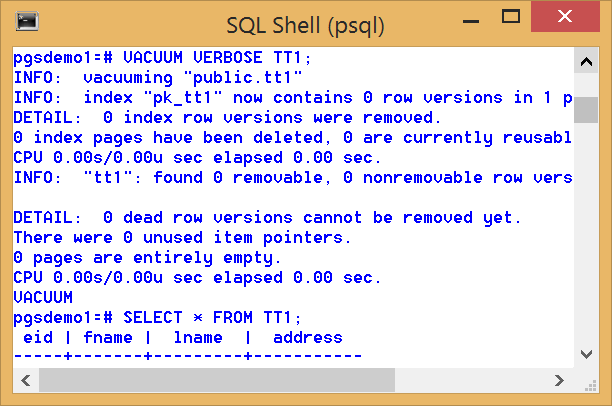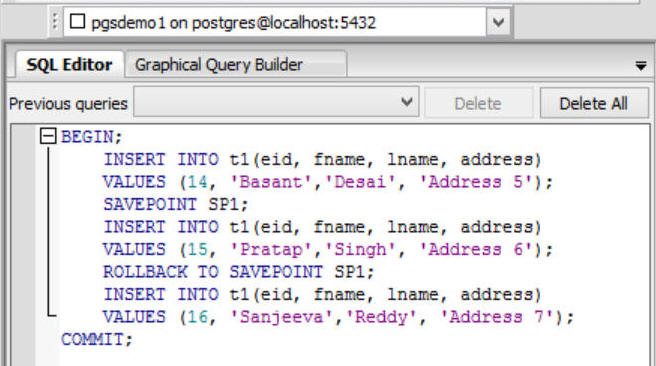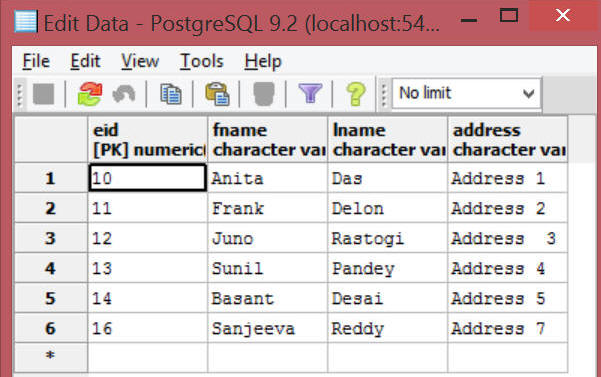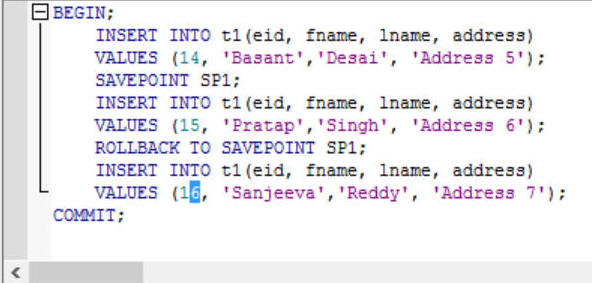Atomicity: phrase stands for ensuring all operations were completed gracefully, else the transaction would be aborted, and a rollback command will restore the former status.
Consistency: Transaction must take the database from one consistent state to another. It is user’s responsibility to insure consistency
Isolation: Transaction should appear as though it is being executed in isolation from other transactions.
Durability: Changes applied to the database by a committed transaction must persist, even if the system fail before all changes reflected on disk
Commit: A commit marks the successful end of a transaction, saves all data during transactions.
SQL>UPDATE EMP SET SAL = SAL * 0.25 WHERE EMPID = 7789
SQL> COMMIT OR ROLLBACKRollback: A rollback marks the unsuccessful end of a transaction.
Savepoint :When you ROLLBACK to a SAVEPOINT, changes made since the SAVEPOINT are discarded, but not changes made before the SAVEPOINT.
Note eid 15 won't load
Set Transaction
The script below will not compile, due to atomicity and consistency, even we try with different session, due to Primary Key constraints , the transaction (total) won't commit.
- READ COMMITTED ISOLATION: The changes will be visible to the transactions with READ COMMITTED isolation.
- SERIALIZABLE ISOLATION : The transactions with SERIALIZABLE level , would see the original data, as the changes were hidden to this level of isolation. A command "VACCUM" removes the obsolete rows, in PostgreSQL database. In oracle there is no vacuum, operation, oracle update a row by overwriting the existing data
The PostgreSQL db, has storage manager (non-overwriting) ,
provides similar benefit of Oracle's REDO-log and ROLLBACK.
Ref: http://www.postgresql.org/docs/9.1/static/transaction-iso.html
VACUUM [ VERBOSE ] [ ANALYZE ] [ table ]




